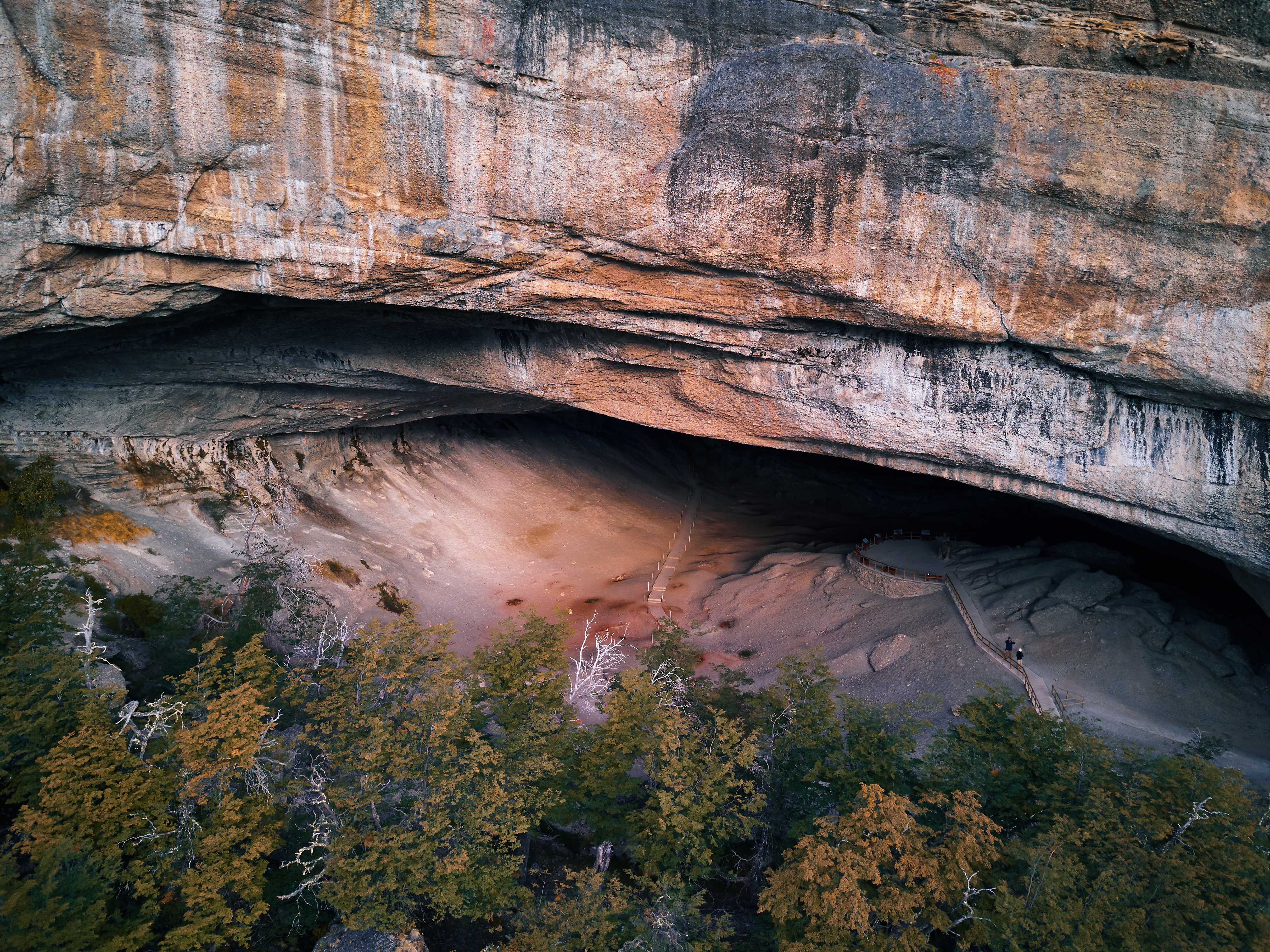Cueva del Milodón Natural Monument on:
[Wikipedia]
[Google]
[Amazon]


 Cueva del Milodón Natural Monument is a Natural Monument located in the
Cueva del Milodón Natural Monument is a Natural Monument located in the
File:Cueva del Milodon-CTJ-IMG 6807.jpg
File:Cueva del Milodon-CTJ-IMG 6811.jpg
File:Cueva del Milodon-CTJ-IMG 6809.jpg
 Cueva del Milodón Natural Monument is a Natural Monument located in the
Cueva del Milodón Natural Monument is a Natural Monument located in the Chile
Chile, officially the Republic of Chile, is a country in the western part of South America. It is the southernmost country in the world, and the closest to Antarctica, occupying a long and narrow strip of land between the Andes to the eas ...
an Patagonia, northwest of Puerto Natales and north of Punta Arenas.
The monument is situated along the flanks of Cerro Benitez. It comprises several cave
A cave or cavern is a natural void in the ground, specifically a space large enough for a human to enter. Caves often form by the weathering of rock and often extend deep underground. The word ''cave'' can refer to smaller openings such as sea ...
s and a rock formation called ''Silla del Diablo'' (Devil's Chair). The monument includes a cave which is notable for the discovery in 1895 of skin, bones and other parts of a ground sloth called '' Mylodon darwini,'' from which the cave takes its name. It is also part of the End of the World Route The End of the World Route (Spanish: ''Ruta del Fin del Mundo'') is a Chilean touristic scenic route located in the Magallanes and Chilean Antarctic Region, the most southerly region of the country. The term "end of the world" refers to Chile being ...
, a scenic touristic route.
Milodón Cave
The largest cave in the monument is the long Milodón Cave. It was discovered in 1895 by Hermann Eberhard, German explorer of Patagonia. He found a large, seemingly fresh piece of skin of an unidentified animal. In 1896 the cave was explored by Otto Nordenskjöld and later it was recognized that the skin belonged to ''Mylodon'' – an extinct animal which died 10,200–13,560 years ago. In the cave and other caves of the monument have been found remnants of other extinct animals and human remnants. At the entrance of the monument is a life size replica of the prehistoric ''Mylodon'', which was a very large herbivore, somewhat resembling a large bear. It became extinct at the end of thePleistocene Epoch
The Pleistocene ( , often referred to as the '' Ice age'') is the geological epoch that lasted from about 2,580,000 to 11,700 years ago, spanning the Earth's most recent period of repeated glaciations. Before a change was finally confirmed i ...
.
Mylodon remains
Investigations determined the survival of the ''Mylodon'' until about 5,000 years ago and confirmed the existence of other animals, such as the "Dwarf Horse" '' Hippidion'', thesaber-toothed cat
Machairodontinae is an extinct subfamily of carnivoran mammals of the family Felidae (true cats). They were found in Asia, Africa, North America, South America, and Europe from the Miocene to the Pleistocene, living from about 16 million ...
'' Smilodon'' and the litoptern '' Macrauchenia''
Human remains
Diverse elements of human habitation are found at Cueva del Milodón including fire-fractured rock, lithic tools and human remains. Human habitation at Cueva del Milodón is dated as early as 6000 BC.Calvin J. Heusser (2003) ‘'Ice Age Southern Andes: A Chronicle of Paleoecological Events'‘, Elsevier, 240 pagesPanorama
See also
*Cerro Toro
Cerro Toro is a Cretaceous landform of the Magallanes Foreland in the Patagonian region of southeastern Chile. The Cerro Toro is an element of the southern Andes and a product of the Andean orogeny, caused by the subduction of the Nazca Plate ...
* Eberhard Fjord
* Martin Gusinde Anthropological Museum
* '' Hippidion saldiasi''
References
{{DEFAULTSORT:Cueva del Milodon Natural Monument Milodon Protected areas of Magallanes Region Archaeological sites in Chile Natural monuments of Chile Paleontology in Chile Pleistocene paleontological sites of South America 1895 in paleontology Landforms of Magallanes Region Última Esperanza Province Geology of Magallanes Region